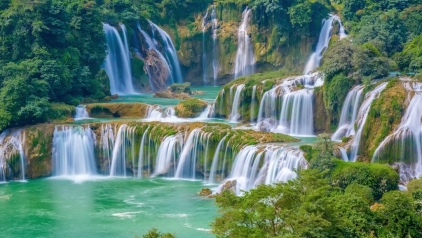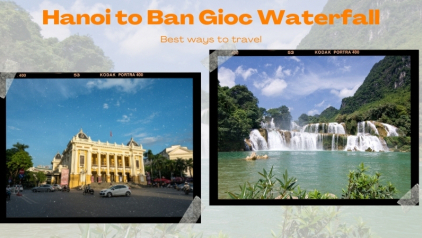Cao Bang Guide - All you need to know
Cao Bang is a mountainous province located in the Northeast of Vietnam. It is favored by nature with great mountains and forests beauty. Not only that, Cao Bang tourism is also attracting tourists by many historical places. That is why Cao Bang has always been the popular destination which many tourists choose to visit in their vacations.
Cao Bang has many valuable cultural and historical relics such as Pac Bo special national monument, Tran Hung Dao special national forest relic area, Dong Khe border campaign area. Cao Bang not only has many historical relics but also many famous natural landscapes such as Ban Gioc waterfall, Nguom Ngao cave and Thang Hen lake, Phja Oac-Phja Deo ecological forest, etc. With the diversity of natural resources and culture, Cao Bang is one of the best tourist destinations that you should explore in Vietnam.
History of Cao Bang
Cao Bang Province and Lang Son Province were called Quang Nguyen in the Ly-Tran Dynasty. This land (Lang Son and Cao Bang) belongs to An Nam from 1039, Ly Thai Tong dynasty, after defeated Nung Tri Cao. After losing Thang Long in 1592, the Mac dynasty went to Cao Bang and stay here to fight against Le Trinh dynasty until 1677.

Lenin Stream
On February 17, 1979, Chinese destroyed almost the whole Cao Bang, the buildings were destroyed, including temples and shrines. The entrance of Ho Chi Minh Presidential Palace relic at Pac Bo Cave was also bombed and destroyed, a stone monument was written by Uncle Ho when he returned to the country also cracked in half.
Top attractions in Cao Bang
- Pac Bo Special National Monument: Pac Bo is located in Truong Ha commune, Ha Quang district, close to the Vietnam-China border, more than 50km from Cao Bang city. After 30 years of traveling to find a way to save the country and work abroad, on January 28, 1941, Nguyen Ai Quoc returned to Vietnam and chose Pac Bo as a place to live and revolutionary activities for 1941 – 1945 period. Here, Nguyen Ai Quoc opened political and military training courses for revolutionary officers in Cao Bang province, translated the Soviet Union Communist Party History into Vietnamese, drafting and publishing many revolutionary documents, etc.
- Ban Gioc Waterfall: including 2 waterfalls located in Quan Son river, at the border between Vietnam and China. It is one of the biggest border waterfalls in the world: the waterfall on the left belongs to Vietnam and the right one belongs to China. From a height of over 30 m, a large amount of water pours many steps of limestone. In the middle of the waterfall, there is a large stone covered by trees and a creeper that have split water into 3 streams.
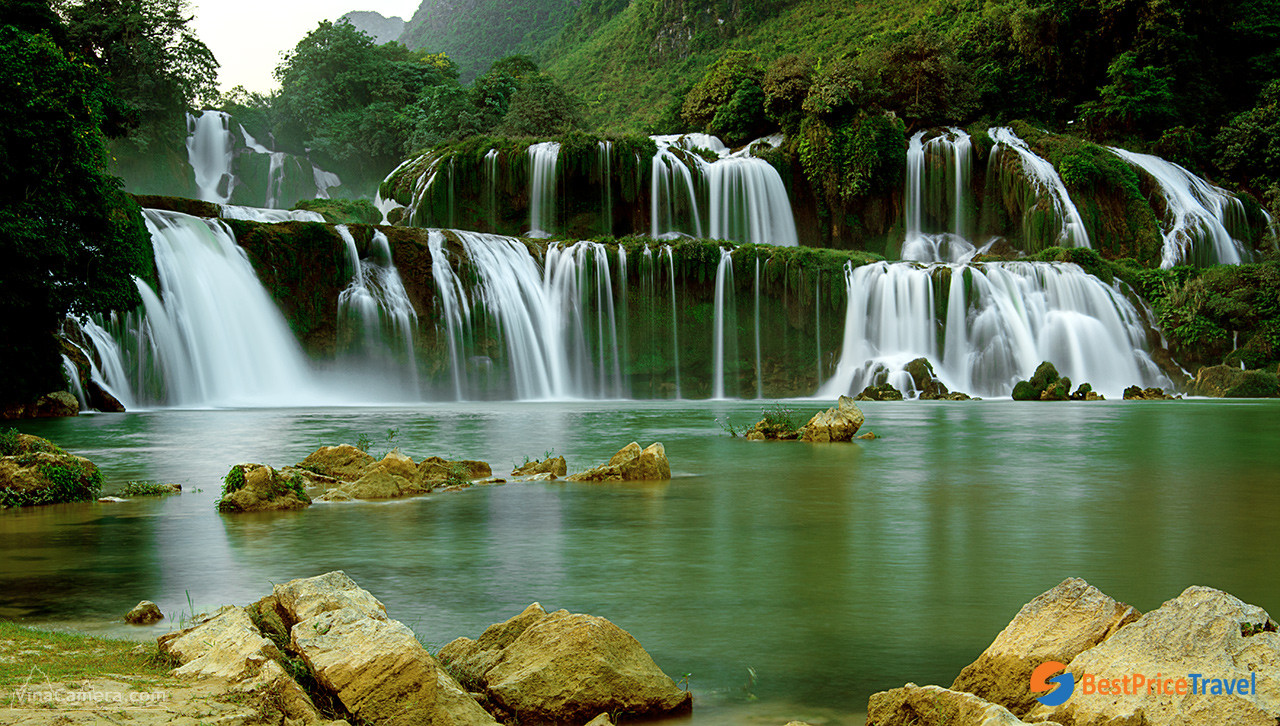
Ban Gioc Waterfall
- Nguom Ngao Cave: a large cave formed from the weathering of limestone. Nguom Ngao ( in Tay’s language means Tiger cave or "cave between stone valleys") was discovered by local people in 1921. The cave is 2,144m long, consists of 3 entrances: Nguom Lom, Ngom Ngao and Ban Thuon. The dome of the cave closed and opened, giving the viewer an unexpected interest.
Culture
Cao Bang has many ethnic groups, the majority are Tay (about 42%), Nung (35%), and other groups such as Dao, H’Mong, Kinh, etc. Traveling to Cao Bang You will have the opportunity to learn more about the interesting traditional cultural heritage of the Tay and Nung people here. Tay people have a very unique culture expressed in the melodies of Lang, Then. While Nung people often dance with fans, scarves, and rattles.
When you visit a Tay’s house, you should not touch the worship objects or turn your back on sacred places in the house. Ethnic people in Cao Bang are very friendly and open. They often show their friendly by inviting wine, even if you cannot drink, you should drink a little bit.
Weather
Climate Cao Bang is divided into 2 seasons: the rainy season is from April to September and the dry season is from October to March next year. If you intend to travel Ban Gioc waterfall, you should go around August 8-9, this time waterfalls will be filled with water which is very beautiful.
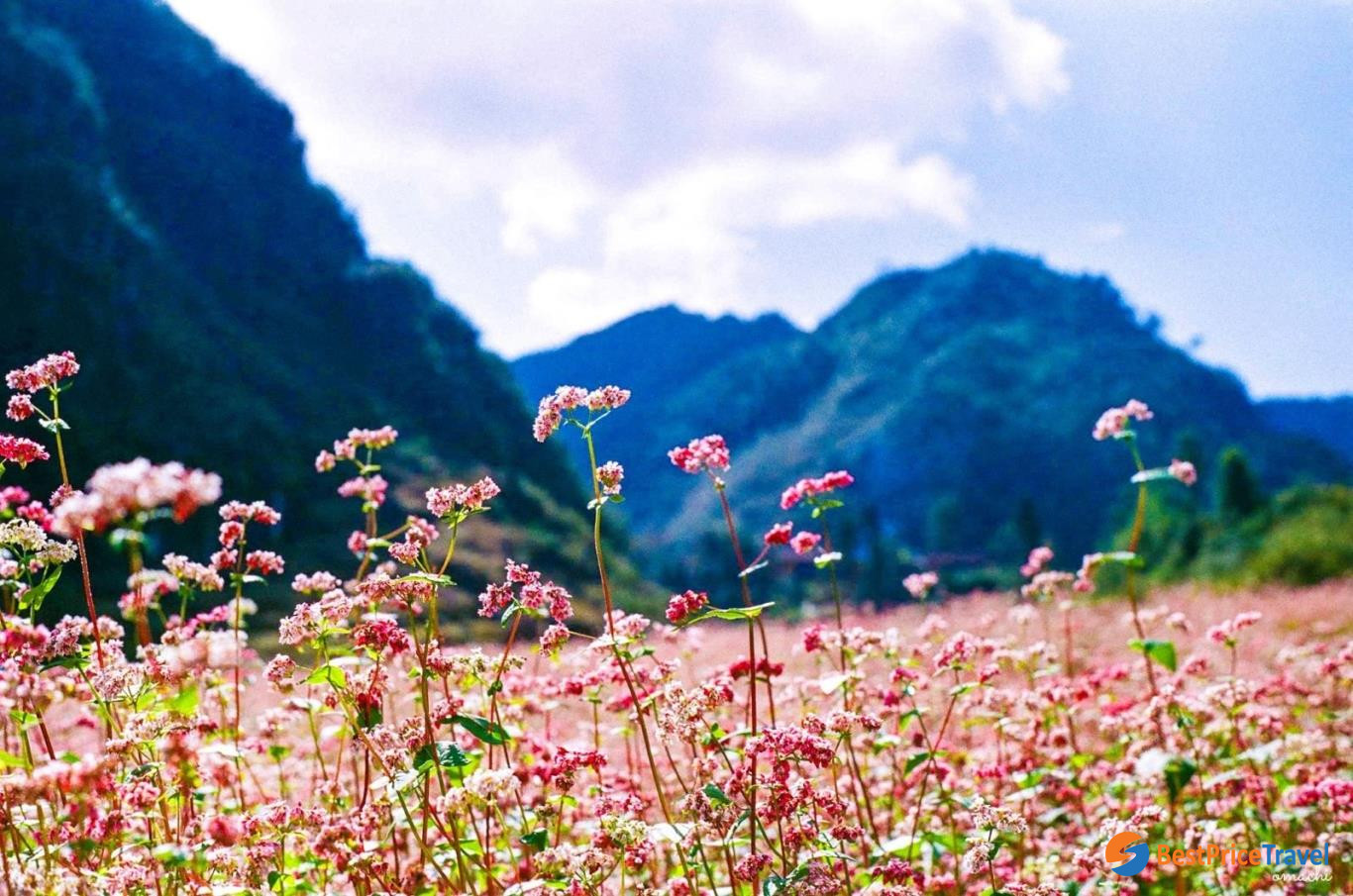
Tam Giac Mach Flower
If you like to see Tam Giac Mach flowers, you can go to the end of the year around November. You will have a chance to admire snow in winter (late last year to early next year), this time the temperature in the Pia Oac forest will be very low.
Transportation
From Hanoi, there are only 2 ways to go Cao Bang:
- Bus: tourists can catch a bus in My Dinh Station, it will take you about 8 hours to Cao Bang. You should book the ticket in advance to make sure that it still has available seat for you.
- Motorbike: If you choose traveling to Cao Bang by motorbike, you can go straight Ha Noi – Thai Nguyen highway, then turn into National Highway 3 to enter Cao Bang. This is a beautiful but dangerous road with passes and many big trucks.
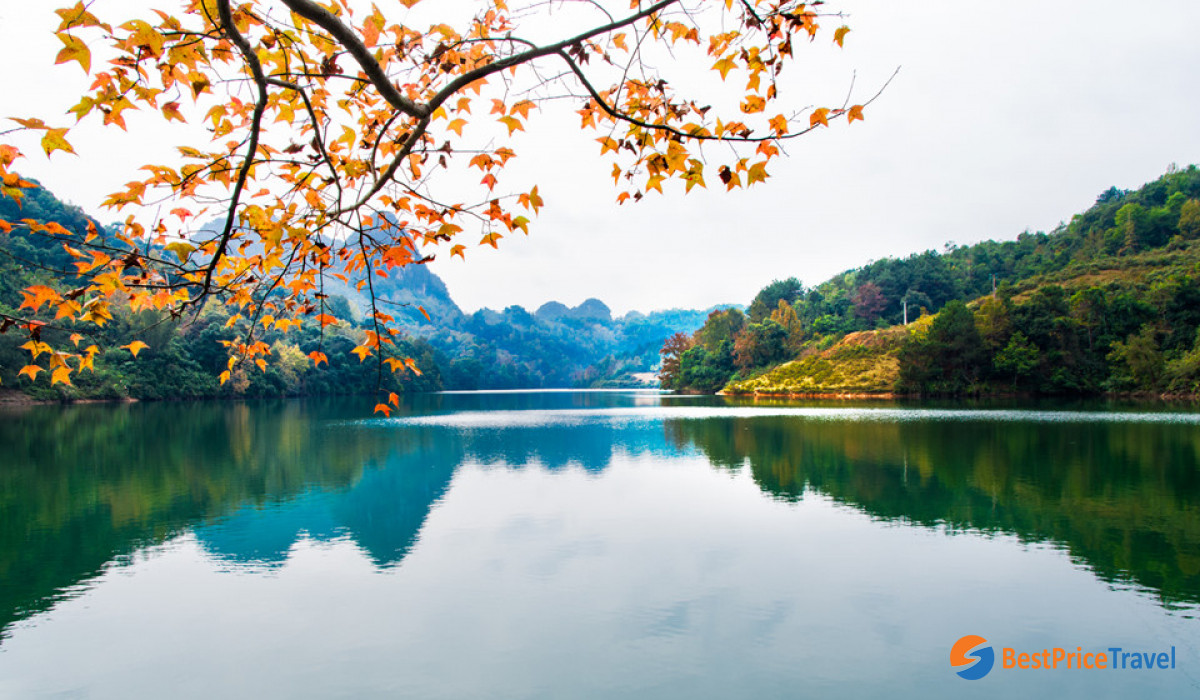
Trung Khanh
You can choose a bus or rent a motorbike to explore Cao Bang - the magnificent mountain area. And according to Cao Bang traveling experience, motorcycles are the best way for you to discover Cao Bang. You can ask your hotel to rent a motorbike.
TRAVEL TIP
- You should bring your driver’s license and must drive very carefully because there are many dangerous and zigzag roads.
- If you travel to Cao Bang in the summer, you need to prepare sunscreen, a hat, an umbrella, and a comfortable outfit because of the hot weather.
- Prepare some medicines to prevent colds due to weather changes
